11 Foods That Keep You Fuller, Longer
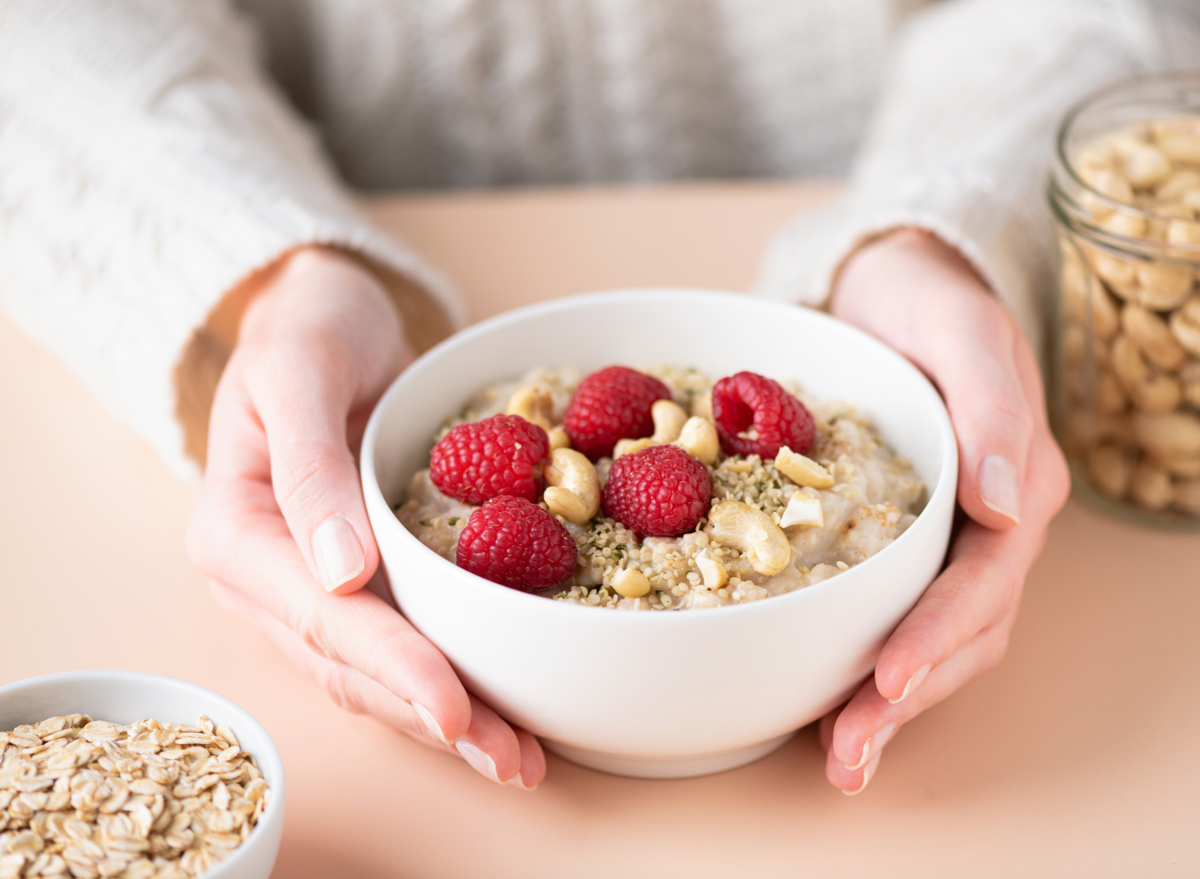
There are various ways to stay fuller longer, which is great if you don’t have a lot of time to eat throughout the day, don’t like to work on an empty stomach, or don’t want to overindulge too often. If that sounds like you, then you might want to start drinking more water and avoid white carbs, not to mention making sure that you’re eating certain foods. When it comes to the latter, Steph Magill, MS, RD, CD, FAND, owner of Soccer Mom Nutrition, tells Eat This, Not That!, “Some foods make you feel fuller longer because they have certain characteristics that affect your appetite and digestion.”
For instance, when it comes to protein, Magill explains that it “is the most satiating macronutrient, meaning it can reduce your hunger and increase your fullness more than carbs or fat.” She points out that “protein also takes longer to digest and affects the levels of hormones that regulate your appetite.” Magill also mentions the benefits of food being high in fiber, telling us, “Fiber is a type of carbohydrate that is not fully digested by your body. It can add bulk to your food and slow down the emptying of your stomach, which can make you feel full for longer. Fiber also helps regulate your blood sugar levels and prevent spikes and crashes that can trigger hunger.”
Beyond that, “some foods contain a lot of water or air, which can increase their volume without adding many calories,” Magill says while noting that the food items you focus on should be “high in volume” but “low in energy density.” Continuing to address the former aspect, she adds that “these foods can fill up your stomach and stretch its walls, which can send signals to your brain that you are full.” As for the second, she says that “energy density is the number of calories per gram of food.” Magill explains that “foods with low energy density have fewer calories for their weight, which means you can eat a larger portion without consuming too many calories.”
With that in mind, check out the following foods that hit the mark when it comes to these requirements and, in turn, will make you feel fuller longer. Read on, and for more, don’t miss 10 Best Protein-Packed 100-Calorie Snacks for Weight Loss.
Oatmeal
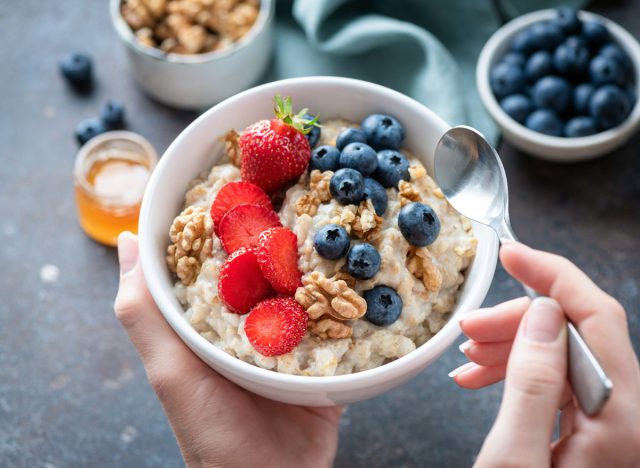
“Oatmeal is a whole grain that is rich in fiber, especially a type of soluble fiber called beta-glucan,” says Magill. If you’re wondering what “rich” actually means in this case, you can consider the fact that the average adult should be aiming to consume 14 grams of fiber for every 1,000 calories of food, according to the U.S. Department of Agriculture. The USDA also notes that raw oats contain 10.1 grams per 1,000 grams which is pretty darn decent. Magill adds, “Fiber can slow down the digestion and absorption of carbs, which can keep your blood sugar levels stable and prevent spikes and crashes that can trigger hunger.”
Fish

Magill also recommends fish, saying, “Fish is a lean source of protein that also contains omega-3 fatty acids, which are beneficial for your heart and brain health. Protein and omega-3s can both help you feel satisfied after eating.” As for what kind of fish to enjoy, canned tuna has 19 grams of protein per 100 grams, according to the USDA. If you would prefer a couple of other options, farmed rainbow trout has 19.9 grams while farmed Atlantic salmon has 20.4 grams.
Nuts
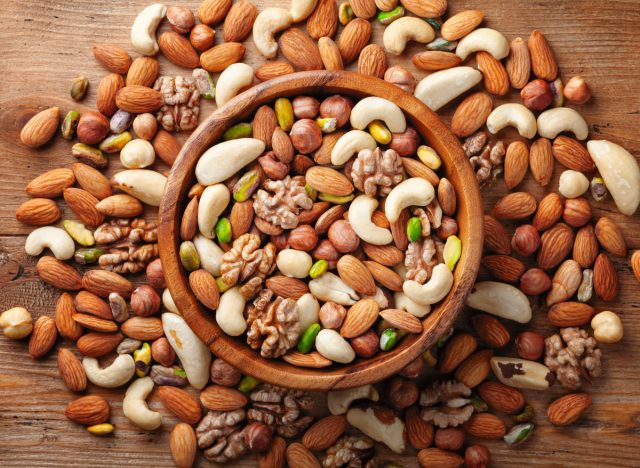
When you eat nuts every day, you’ll benefit from the fact that they “are high in healthy fats, protein, and fiber, which are all filling nutrients,” says Magill. “Nuts also provide satiety and energy, as well as antioxidants and minerals that support your health.”
Kristen Carli, MS, RD, who runs a private nutrition practice in Scottsdale, Arizona, called Camelback Nutrition and Wellness, specifically recommends pistachios. She tells Eat This, Not That!, “Pistachios offer a triple-whammy. They are loaded with plant-based protein, as well as fiber and fat, helping to keep you fuller longer.”
Beans
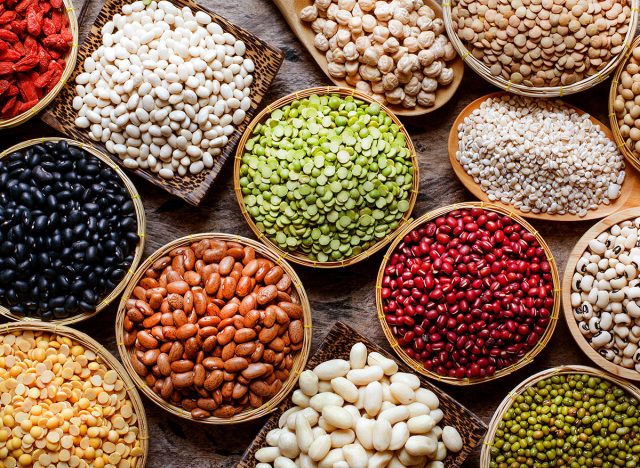
While you may love to make green beans, kidney beans, and black beans a part of your delicious dishes, there are actually around 400 different kinds of beans that you could ultimately choose from, according to the Ontario Bean Growers. As for keeping you full, Magill notes that “beans are legumes that are high in both protein and fiber.” They also “contain complex carbs that are slowly digested by your body, which can keep you full for longer.”
Avocados
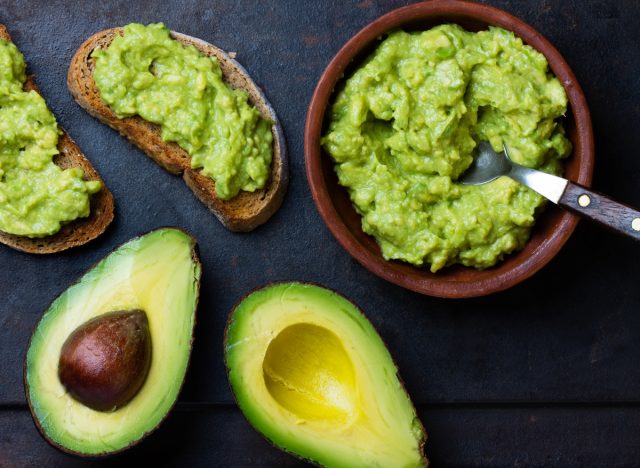
Magill adds avocados to her list of foods that will make you feel fuller as does Carli, who says, “I love recommending avocados because they contain both fiber and healthy fats. Seventy-nine percent of an avocado’s weight is fiber and water.” She tells us that “they are, also, essentially the only fruit with good fats, with about 6 grams of unsaturated fats per serving.” She notes that while “more research is needed,” there is a “growing body of evidence connecting eating avocados to a positive impact on body weight.”
Flaxseeds
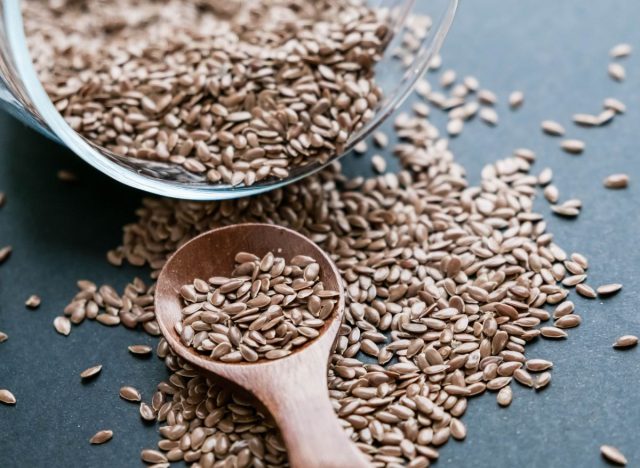
“One tablespoon of flaxseeds contains 2 grams of fiber and 2 grams of ‘healthy’ fats,” says Carli while recommending them as something that will help to keep you feeling full. If you’re eager to reap the benefits of flaxseeds but aren’t sure how to make them a part of your regular menu, she tells us, “They can easily be sprinkled in many types of dishes. I love ground flaxseed on top of avocado toast, in smoothies, and even sprinkled on oatmeal.”
Chia Seeds
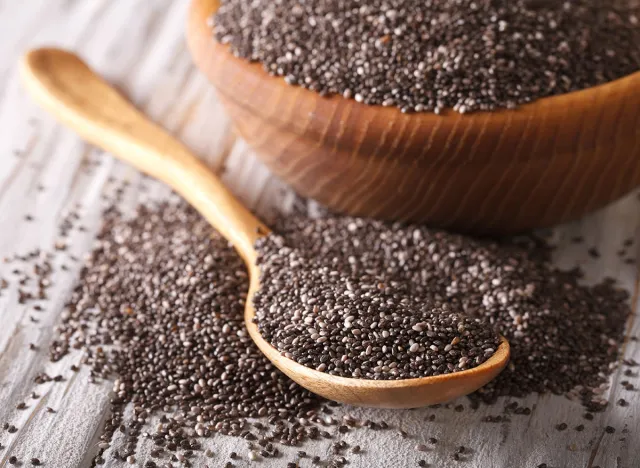
“Chia seeds, like flaxseed, are a good source of omega-3 fatty acids and fiber,” says Carli. Again, she has a couple of recommendations on how you might want to give chia seeds a try, saying, “They can easily be added to most dishes. I like to eat mine as chia pudding or homemade raspberry chia jam.” Yum and yum!
Raspberries
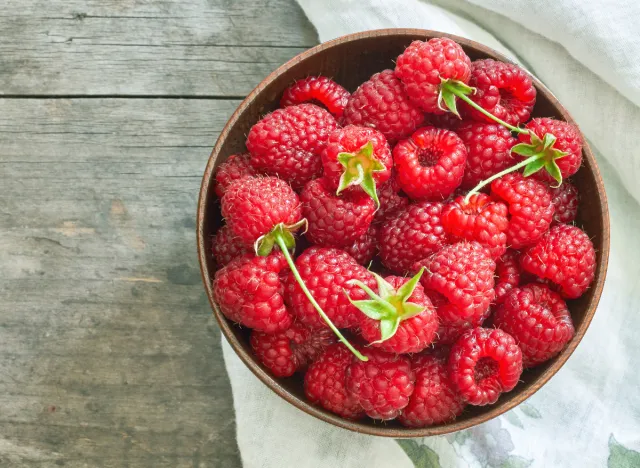
If you like the idea of getting your fiber from fruit, then you should pick up raspberries the next time you’re at the grocery store. Carli tells us, “Raspberries are one of the highest fiber-containing fruits. They have 8 grams of fiber per 1 cup serving, compared to 3 grams of fiber per 1 cup serving of blueberries.”
Apples
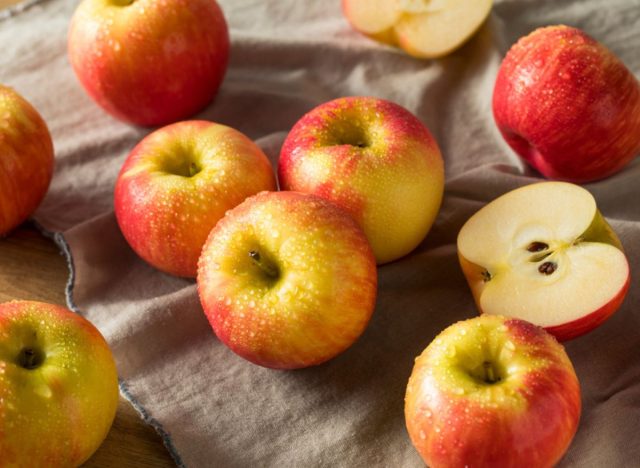
Apples which are full of fiber, are another fruit that will make you feel nice and full. They’re also a recommendation from both Magill and Carli. To put it into context, apples have 2.1 grams of fiber for every 100 grams, according to the USDA, while red grapes only have 0.91 grams, plums have 1.4 grams, and peaches have 1.5 grams.
Lentils
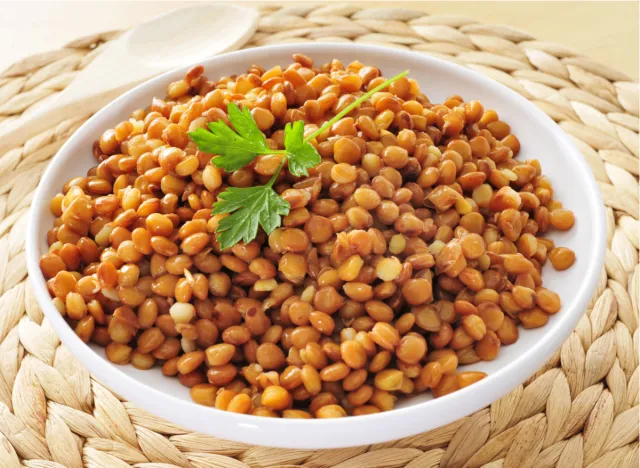
Lentils, which can be considered a superfood, “are a type of pulse and they are loaded in fiber,” says Carli. If you’re wondering just how much that might be, she clarifies that “in one cup of lentils, you have 50% of your daily value of fiber with 15 grams.” She also tells us that’s “not to mention they are also packed with plant-based protein.”
Chickpeas
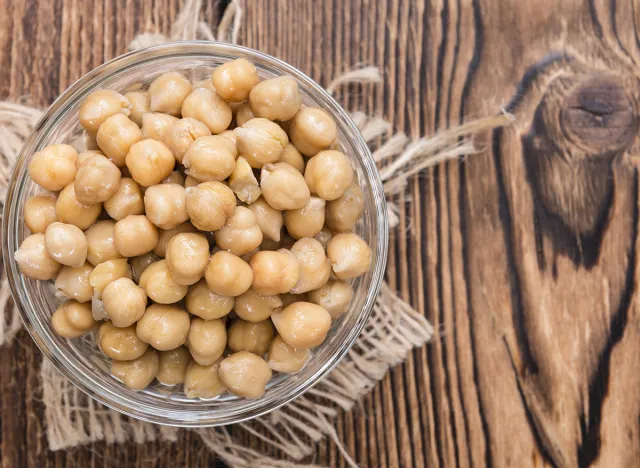
Chickpeas—or garbanzo beans as they’re also known—are a fabulous source of protein, folate, iron, and phosphorus, as well as polyunsaturated and monounsaturated fatty acids, according to the Harvard T.H. Chan School of Public Health. On top of that, Carli tells us, “Similarly to lentils,” chickpeas “are packed with fiber.” She notes that “as a legume, they have 8 grams of fiber per 1/2 can.” Beyond that, she points out that this is another option that is “loaded with plant-based protein.”